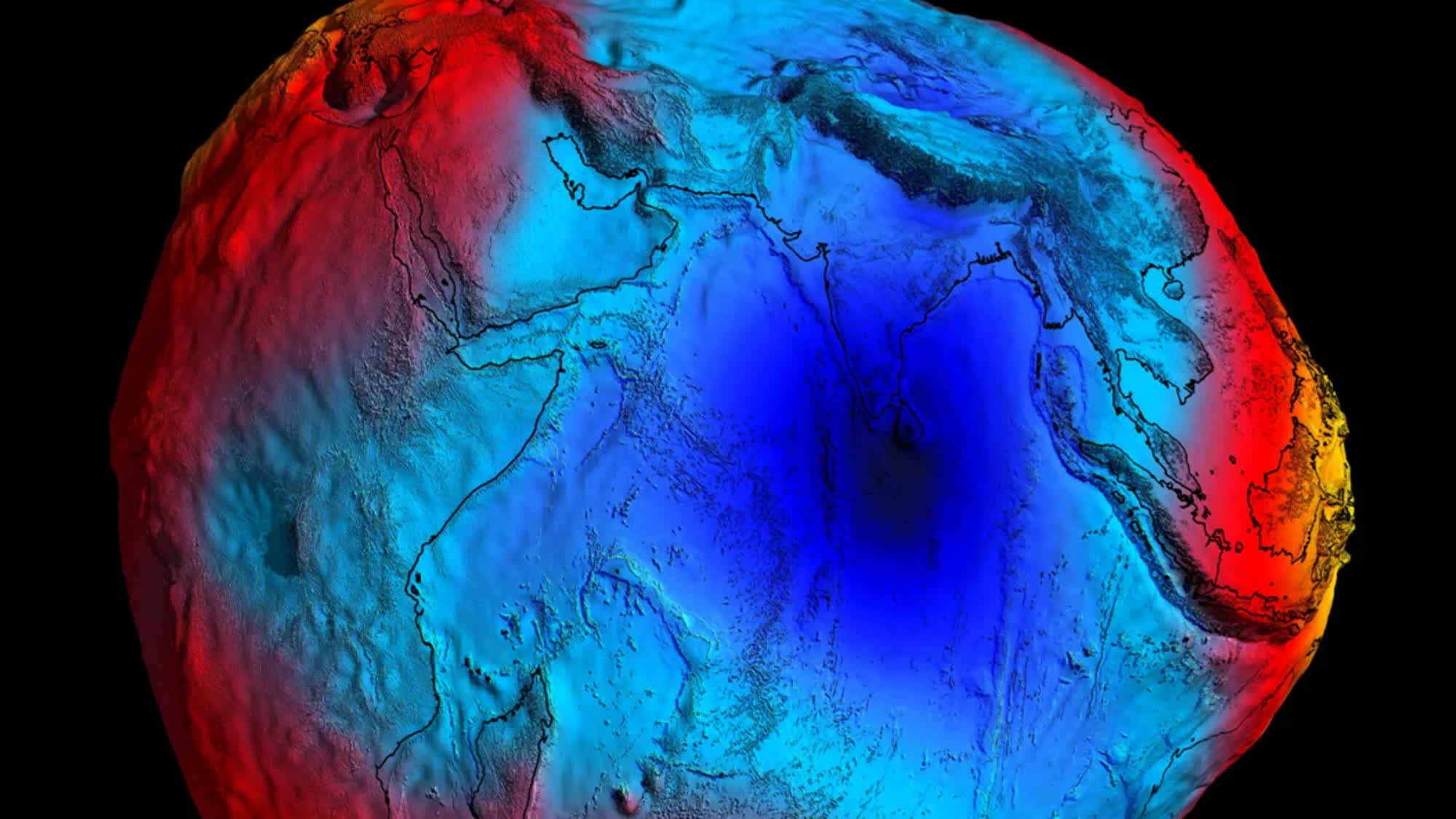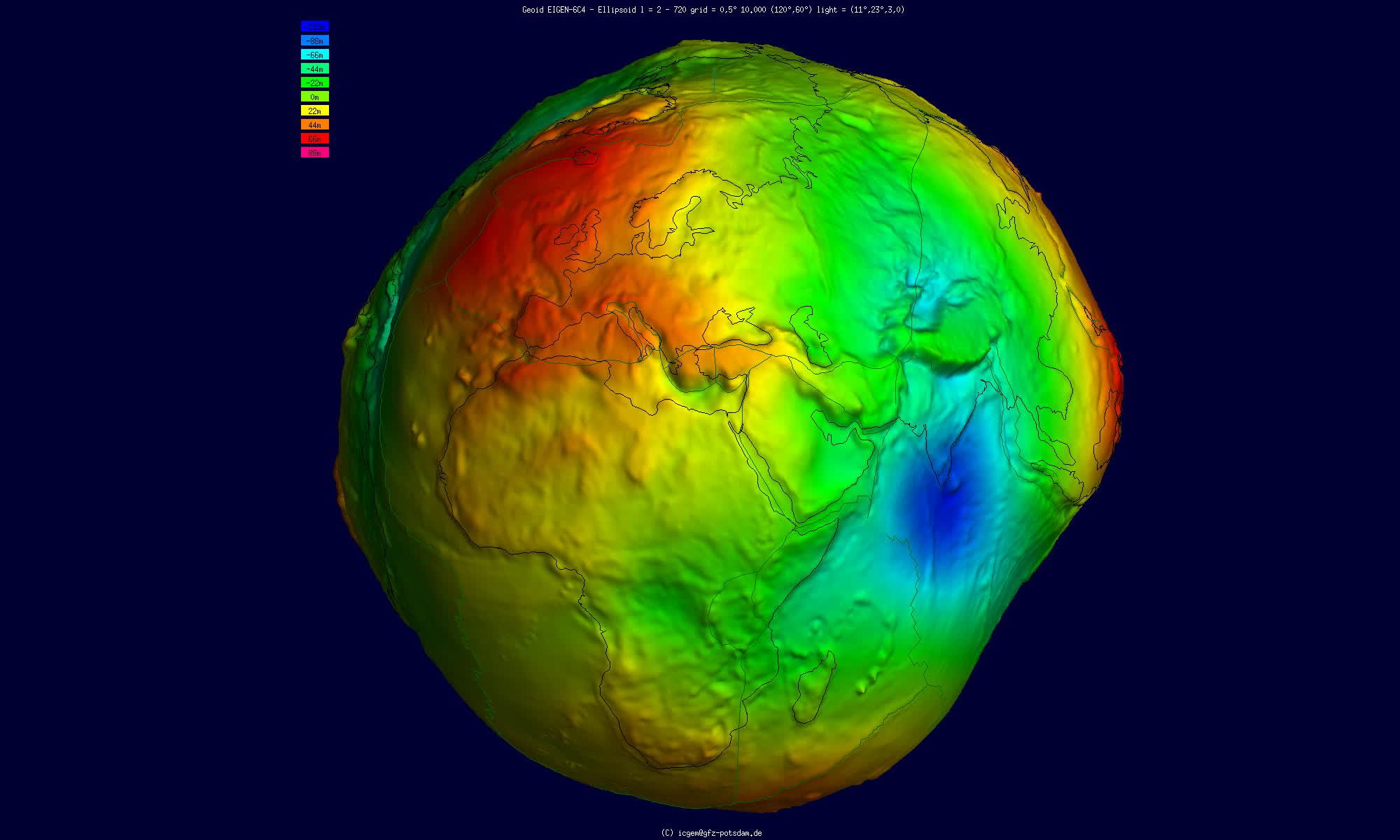Bottom line: There's a well-known "hole" in Earth's gravity field just off India's coastline, known as the Indian Ocean Geoid Low (IOGL). A new study is providing a potential explanation for this phenomenon, although the research doesn't consider some crucial events in the planet's geological history.
Rather than being a perfect sphere, Earth, along with every other planet we know of, is described as an "ellipsoid," while "geoid" refers to the planet's surface in topography. A geoid exhibits an uneven gravitational pull, which can vary in strength depending on the altitude and the material beneath the planet's crust.
In 1948, Dutch geophysicist Felix Andries Vening Meinesz discovered a gravitational anomaly forming a circular depression off India's southern tip, covering approximately 3 million square kilometers. This depression causes sea levels to drop by over 100 meters and is recorded as the lowest point in Earth's geoid.
A new study by Indian researchers, recently published in the Geophysical Research Letters journal, aims to explain how the Indian Ocean Geoid Low was formed. The study authors, Debanjan Pal and Attreyee Ghosh, conducted numerous supercomputer simulations to replicate Earth's state 140 million years ago.
The Indian scientists ran 19 different simulations of Earth's geography, spanning from 140 million years ago to the present day. They recreated various behaviors for tectonic plates, magma flows inside the planet's mantle, and more. Among the 19 simulations, six resulted in the formation of a "gravity hole" similar to the IOGL we observe today.
All six of the successful simulations had a common qualifying factor: the presence of magma plumes around the geoid low. Together with the nearby mantle structure, these plumes were likely responsible for the formation of the gravity hole. The simulations confirmed that without these plumes, no geoid low was formed.
As explained by Attreyee Ghosh, India occupied a very different location 140 million years ago, and a now-disappeared ocean separated the Indian subcontinent from Asia. The Indian plate later connected with the Asian one, and the ancient oceanic plate submerged into Earth's mantle, triggering the formation of magma plumes that brought low-density material closer to the surface.
The study suggests that the Indian gravity hole formed around 20 million years ago, but its final results have faced some controversy from other scientists. Alessandro Forte, a geology professor at the University of Florida, points out that the new research overlooks the fact that 65 million years ago, a mantle plume erupted where the Indian continent would have been at that time. Additionally, the simulated geoid differs from Earth's actual surface shape.
The study authors acknowledge the limitations in their work, stating that not every possible factor was considered in the simulations due to the uncertainty of Earth's past appearance. As we go further back in time, Ghosh explained, our confidence in the models decreases. Nevertheless, the overall explanation for the formation of Earth's gravity hole through magma plumes should still be considered "quite clear."
https://www.techspot.com/news/99551-earth-gravity-hole-off-indian-coasts-has-finally.html

